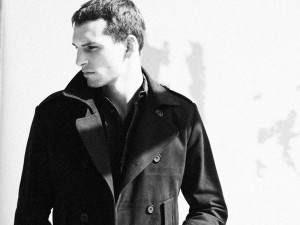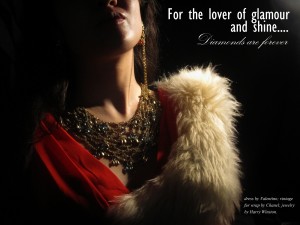Conference of the Birds, a la haut couture
May 5th, 2012
Imagine my surprise when, while poking around one of my favorite blogs, I saw something about a clothing line called Conference of the Birds. After a little bit of googling, it seems like it is indeed a men’s clothing line, designed by Andrew Holden in 2008 and 2009. Holden’s inspiration for naming the line was indeed Farid Ud-Din Attar’s poem, though there is no explanation for why or how it inspired him. His 2009 spring collection is described as “neutral colored pieces highlighted by the use of sun-kissed hues reminiscent of a desert sunset.”
(photos from http://thefashionisto.com/conference-of-birds-spring-2009-2/)
Inspired by his work—who is this guy, and how did he learn about conference of the birds??—I decided to do my own sartorial take on the Conference of the Birds poem. Rather than designing my own clothing (which seemed far too difficult), I decided to take a page out of “America’s Next Top Model” and Vogue’s book by designing a photo-spread inspired by the characters in the Conference of the Birds. I specifically chose to make it a commercial interpretation of the Conference of the Birds, both because I was intrigued by the fact that Holden had also done so and because I liked the idea of idealizing different human flaws as a statement about media and representation. Each of the tropes depicted in the spread present the character type as positive (for the dreamer, for the romantic, etc.), while in Attar’s version they are decidedly not flattering.
I chose to recreate the Nightingale, the Duck, the Partridge, and the Heron, and chose outfits and photo-settings to represent what each stands for. Initially, I had hoped that the photos when superimposed or when viewed together would give the observer a sense of unity, to symbolize the composition of the Simorgh by thirty different birds, but I ended up not illustrating all of the birds. The fact that the same person is pictured in three of the four photos, however, perhaps implies that each of the birds’ characters represents just one aspect of the same being.
The Nightingale’s excuse:
The nightingale made his excuses first.
His pleading notes described the lover’s thirst…
‘The secrets of all love are known to me,’
He crooned. ‘Throughout the darkest night my song
Resounds…
I am so drowned in love that I can find
No thought of my existence in my mind.
Her worship is sufficient life for me,
The quest for her is my reality
The nightingale photo was the easiest, since I have a pair of lovebirds living right next door to me. The caption reads, “For the romantic…a red dress and red wine make the perfect match,” drawing the connection between wine, drunkenness, and love that is often made in Sufi love poetry. I chose to leave the face of the beloved unrevealed, implying that the identity of the object of love might not be the most important factor in the relationship—on the contrary, the most important factor may be the lover’s sense of romance.
The Duck’s excuse:
The coy duck waddled from her stream and quacked:
‘Now none of you can argue with the fact
That both in this world and the next I am
The purest bird that ever flew or swam…
There’s no doubt in my mind
That purity like mine is hard to find.
Among the birds I’m like an anchorite—
My soul and feathers are a spotless white.
I chose to interpret the idea of the duck within the Harvard context. The duck in this case is not the overly-observant and underly-spiritual worshipper, but instead a Harvard student that is more focused on appearances than content. The caption reads, “For the showoff…hit the library in style,” implying that the model’s objective in going to the library is not to study, but only appear to be studying.
The Partridge’s excuse:
The pompous partridge was next to speak…
He clucked, ‘My one desire
Is jewels; I pick through quarries for their fire.
They kindle in my heart an answering blaze…
To yearn for something other than a jewel
Is to desire what dies—to be a fool;
Nothing is precious like a precious stone.
The partridge image is fairly straightforward. The lighting has been created in such a way as to make the jewelry stand out more, just as precious stones might stand out against the dull plumage of a partridge. The caption reads, “For the lover of glamour and shine…diamonds are forever.” The composition of the photo—with the neck clearly the center of attention and the identity, face and body of the subject obscured—reiterates this idea, implying that even though mortal life is transient, cold hard stones remain constant.
The Heron’s excuse:
The heron whimpered next: ‘My misery
Prefers the empty shoreline of the sea.
There no one hears my desolate, thin cry—
I want to sorrow there, there mourn and sigh.
I almost decided to represent the heron as an ‘emo’ hanging out in Harvard Square, but in the end decided that interpreting the heron as a dreamer was more appropriate for the context of a fashion layout. The sea not being readily accessible, the next best thing was the river. A long flowing blue dress, black shawl and unkempt hair were meant to illustrate the mournful, depressed demeanor of the heron, while the blue tones that dominate the photo were meant to express the melancholy beauty of the ocean.





